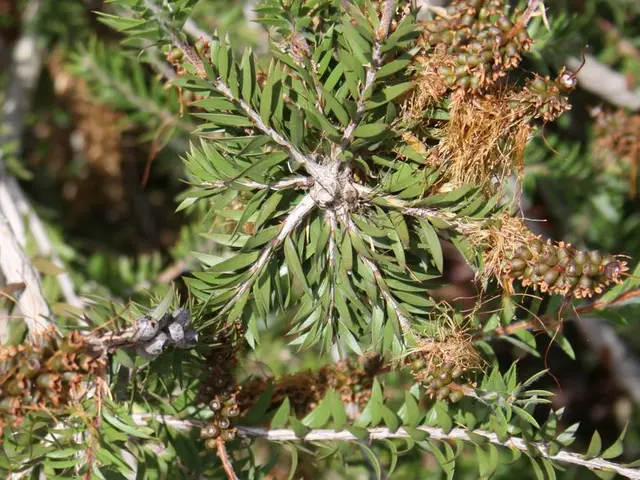Affordable Groceries a Struggle for Most Americans, What Steps Can You Take Towards Self-Sufficiency?
Homegrown Survival Foods: Essential Plants for Self-Sustaining through Difficult Periods
In the whirlwind of modern life, balancing work, family, and personal growth, it's easy to overlook the basics. However, the 2024 Swiftly survey painted a startling picture: a staggering 7 out of 10 Americans are struggling to make ends meet when it comes to food bills. Fast forward to 2025, and the clamor for affordable groceries remains deafening, with food shortages and rising costs taking their toll, especially on essential items like chicken eggs.
In uncertain times, having a reliable source of fresh produce becomes paramount, especially for those who are unsure about where their next meal is coming from. In the midst of this dissent, gardeners have an opportunity to take charge of their lives and become more self-sufficient. It's a call to action, urging everyone to give gardening a shot!
Enter Anh Lin from @GirlandTheWord, who's sharing her top 5 favorite "survival crops" every gardener should grow for unparalleled self-sufficiency. These picks were chosen for their superior storage capabilities, caloric density, simplicity of growth, and versatility.
1. Potatoes
Image Credit: Deposit Photos.
Potatoes are the undisputed champions of famine foods, and they're incredibly easy to grow and store. They're abundant in carbohydrates, ensuring energy remains high during challenging times. With their adaptability to various climates and soil types, these tubers are accessible to most gardeners.
Ready to give potatoes a try? Gather a few seed potatoes with sprouts, well-draining soil, and some space, and you're good to go! Plus, they can be stored in a cool, dark place like a root cellar or basement for months.
2. Garlic
Image Credit: Deposit Photos.
Aside from imparting delicious flavors on dishes, garlic is a powerhouse when it comes to health benefits. Known for its antibacterial and antiviral properties, garlic is essential for beating infections and boosting overall immune function. The good news is that it's simple to grow and can be preserved for lengths of time through drying or pickling. Plus, you can easily replant garlic from a single clove, making it a sustainable survival crop.
It takes up to 9 months for garlic to grow, but Anh Lin asserts that it's low maintenance and pest-resistant, making it a crop you can perpetually cultivate with minimal effort.
3. Pumpkins
Image Credit: Deposit Photos.
Offering versatility and nutrition, pumpkins stand out as a superb survival crop. Having a long shelf life when stored properly, pumpkins can be a staple when fresh produce is hard to come by. These gourds contain a wealth of vitamins (A, E, and C) that support immune function and overall health. And with their ease of growth and relatively low maintenance, pumpkins are a smart choice for your self-sufficient garden.
Pro tip: save your seeds and replant them for future harvests, ensuring your pumpkin sustainability from year to year!
4. Carrots
Image Credit: Deposit Photos.
Easy to grow and versatile, carrots are an essential component of any survival food stash. They can be consumed raw or cooked and are packed with essential nutrients like vitamins (A, K, C, and potassium). Benefitting from well-draining soil and consistent watering, carrots are low maintenance crops you can simply throw seeds into and "let them do their thing."
5. Sweet Corn
Image Credit: Deposit Photos.
Familiar to many, sweet corn is a standout survival crop. Its high carbohydrate content keeps energy stores stable, while its versatility allows it to be enjoyed fresh, converted into a sweetener or flour, canned, or dried for long-term storage. Sweet corn also offers a host of essential nutrients such as fiber, vitamin C, iron, and magnesium.
To top it off, there's a wide array of other survival crops out there! Beets, tomatoes, spinach, cucumbers, beans, cabbage, and winter squash, among others, are versatile, nutrient-dense choices that can be found in a variety of climates and growing conditions.
So, whether you're a gardening novice or looking to diversify your survival foods, these top picks are a great place to start! Embrace self-sufficiency and enjoy the peace of mind that comes with it!
Author
- Bonnie Ferrero Bonnie's passions stretch beyond her professional achievements. A hiking enthusiast, she draws inspiration from nature while navigating Upstate New York's serene landscapes. Cooking, gardening, and home decorating all cultivate an outlet for her creative flair and sense of connectivity. Firmly committed to holistic living, Bonnie's tenets of service, growth, and well-being echo through her various pursuits.
View all posts
In the context of self-sufficiency and gardening, Bonnie Ferrero recommends growing crops like potatoes, garlic, pumpkins, carrots, and sweet corn for their ease of growth, storage capabilities, and nutritional benefits. These survival crops can help ensure a reliable source of fresh produce during uncertain times, supporting overall health and immune function while reducing food bills. By adopting these gardening practices, individuals can take control of their lifestyles and home-and-garden ecosystems, fostering a sustainable and secure living environment.








